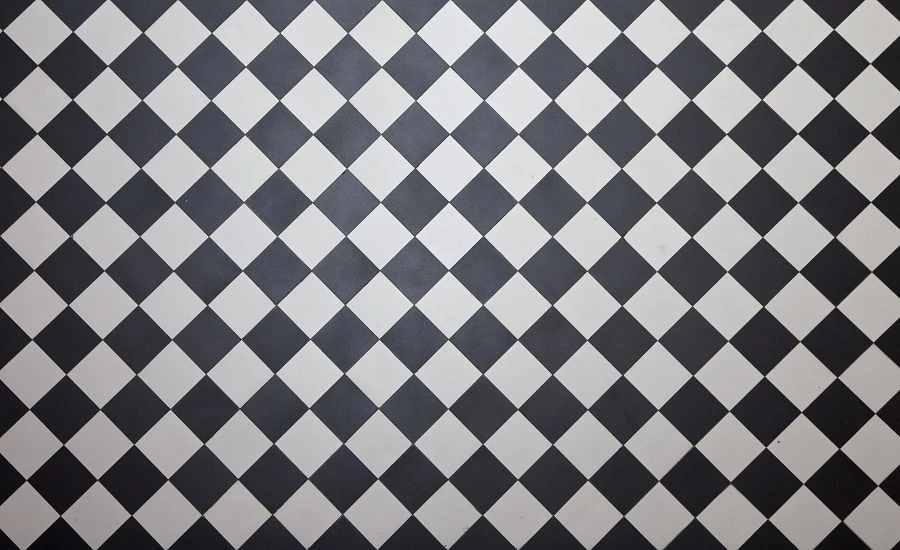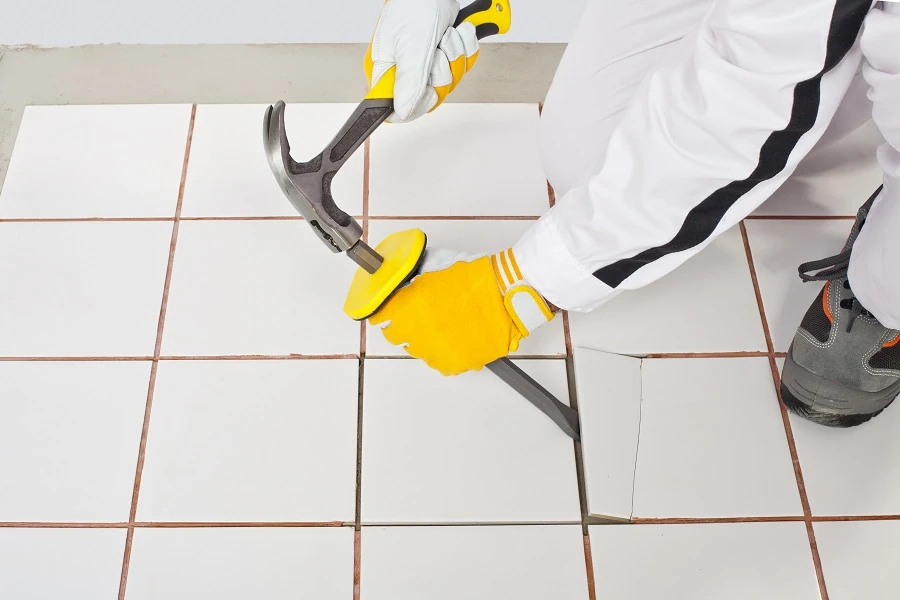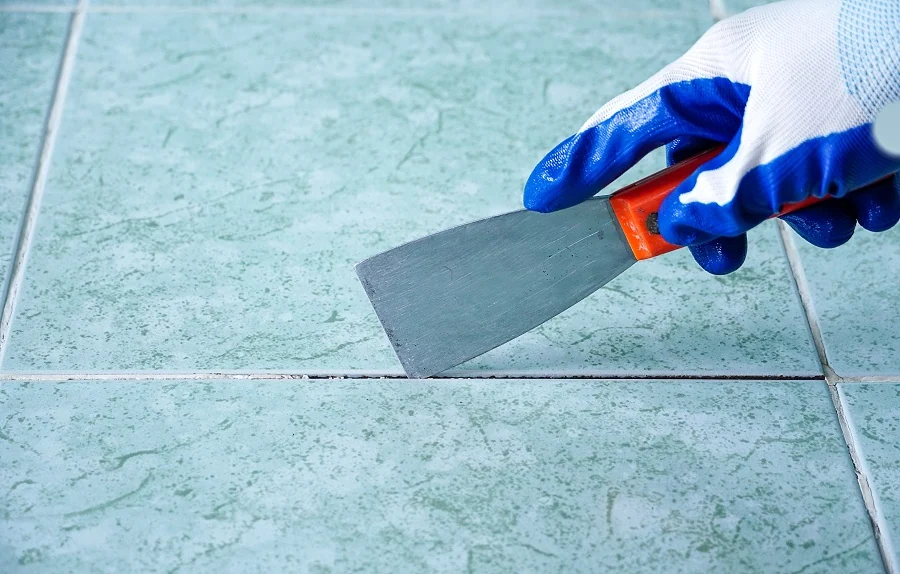
Discovering old flooring during your home renovation can be exciting — until you realize those vintage 9x9 tiles might contain asbestos. If you're a Chicagoland homeowner facing this situation, you're not alone. Many homes built before 1980 contain asbestos flooring materials, and asbestos flooring can still be found in many homes, schools, and other buildings due to legacy products. Learning how to safely and legally remove asbestos flooring is crucial for your family's health and your budget.
Quick Take: Illinois homeowners can legally remove small amounts of asbestos flooring themselves, but proper safety procedures and disposal laws are mandatory. Professional removal costs $5-$15 per square foot,, while DIY approaches cost $200-$1000+ in equipment and disposal fees.
#cta_start
Don’t Want to Deal with the Risks Yourself?
Skip the guesswork — call in a certified flooring specialist today and get safe, legal asbestos removal without the stress.
#cta_end
What Is Asbestos Flooring and Why Should You Care?
Asbestos tile flooring was widely used in homes, schools, and commercial buildings from the 1950s through the 1980s. These construction materials and building materials were popular because asbestos provided excellent fire resistance and durability. However, when asbestos fibers become airborne during damage or improper removal, they can cause serious health issues, including lung cancer and mesothelioma.
The key point homeowners need to understand: asbestos-containing materials are generally safe when left undisturbed. It's only when these materials are damaged, cut, or improperly removed that they release fibers and can become dangerous.
How to Identify Asbestos in Your Flooring
Before taking any action, you need to determine if your flooring actually contains asbestos. Here are the telltale signs:
Visual Identification Clues
Most asbestos floor tiles share these characteristics:
- 9x9 inch tiles (the most common size used in the 1960s-1980s)
- Thickness typically ranges from 1/8 to 1/4 inch
- Colors include light blue, cream, pink, green, or speckled patterns
- A black adhesive or tar-like substance underneath
- Often covered by newer flooring (carpet, vinyl, or laminate)
Professional Testing
While visual cues can suggest the presence of asbestos, it's impossible to confirm the asbestos content solely by looking. Professional testing is the only way to know for certain. Asbestos testing typically costs $250 – $850+ and involves taking small samples to a certified laboratory.
Illinois Laws and Regulations for Asbestos Removal
In Illinois, asbestos removal is regulated by both state and federal agencies. The Environmental Protection Agency (EPA) and the Illinois Department of Public Health (IDPH) have specific requirements:
What Homeowners Can Legally Do
- Small-scale removal (less than 160 square feet) can be done by homeowners
- You must use proper safety equipment, including N95 respirators
- Asbestos waste must be disposed of at licensed facilities
- No power tools that create dust
- Wet methods must be used to prevent asbestos fibers from becoming airborne
When You Must Hire Professionals
- Projects over 160 square feet
- Commercial buildings
- Multi-family properties
- When asbestos-containing materials are severely damaged
#cta_start
Not Sure If Your Floors Can Be Saved?
Get a free professional assessment from Simple Flooring Company. No obligation - just honest advice about repair vs. replacement.
#cta_end
Safe Removal Methods: Your Options Explained

Option 1: Professional Asbestos Abatement
Licensed professionals handle the entire process, from containment to disposal. This is the safest option, but also the most expensive.
Pros:
- Complete safety and legal compliance
- Proper containment prevents contamination
- Professional disposal of asbestos waste
- Insurance coverage
Cons:
- Higher cost ($15-$25 per square foot)
- Scheduling delays
- Temporary displacement from home
Option 2: Encapsulation
Encapsulation involves sealing asbestos flooring with specialized sealants, then installing new flooring over it. This traps asbestos fibers permanently.
Pros:
- Cost-effective solution
- No asbestos exposure risk
- Faster completion
- New flooring can be installed immediately
Cons:
- Doesn't remove the asbestos
- May complicate future renovations
- Requires disclosure to future buyers
Option 3: Careful DIY Removal (Small Areas Only)
For small areas under 160 square feet, Illinois law allows careful homeowner removal with proper precautions.
Essential safety requirements:
- Disposable coveralls and N95 respirators
- Plastic sheeting to contain the work area
- Spray bottle to keep materials damp
- Hand tools only (no power tools)
- Double-bag all waste materials
Step-by-Step Safe Removal Process
Preparation Phase
- Clear the area of all furniture and belongings
- Seal off the work area with plastic sheeting and duct tape
- Open windows for ventilation
- Turn off HVAC systems to prevent fiber circulation
- Have disposal bags and cleaning supplies ready
Removal Process
- Spray the tiles with water to prevent dust
- Use a hand scraper to carefully lift tiles
- Work slowly to avoid breaking tiles
- Keep materials damp throughout the process
- Double-bag all debris immediately

Cleanup and Disposal
- Vacuum the area with a HEPA filter vacuum
- Damp wipe all surfaces
- Dispose of PPE in sealed bags
- Shower immediately after completion
- Transport waste to a licensed disposal facility
When to Call the Professionals
Despite the option for DIY removal, certain situations require licensed professionals:
- Damaged flooring with visible fiber release
- Large areas over 160 square feet
- Multiple layers of asbestos materials
- Black adhesive that's difficult to remove
- Health concerns or family members with respiratory issues
Cost Comparison: DIY vs Professional
Disposal: Following Illinois Regulations
Asbestos waste cannot go in regular trash. Illinois requires:
- Licensed disposal facilities only
- Proper labeling of all waste bags
- Transportation permits for large quantities
- Documentation of disposal
Most Chicago-area waste management facilities accept small amounts of properly bagged asbestos waste from homeowners. Call ahead to confirm requirements and fees.
Is It Safe to Live with Asbestos Flooring?
Yes, intact asbestos flooring poses minimal risk. The danger comes from disturbing the material and releasing asbestos fibers into the air. Many homeowners successfully live with asbestos flooring by:
- Installing new flooring over existing tiles
- Avoiding activities that could damage the tiles
- Regular monitoring for signs of deterioration
- Professional inspection every few years
Protecting Your Family's Health
Asbestos exposure can cause serious health issues, but short-term exposure during proper removal carries relatively low risk. The key is following safety protocols:
- Never dry sweep or vacuum asbestos materials
- Keep the area damp during any work
- Use proper respiratory protection
- Limit access to work areas
- Monitor for symptoms like persistent cough or breathing difficulties
Don’t Risk Asbestos Exposure — Get Help from the Pros
Asbestos flooring is nothing to take lightly. Even if removal is legal for small areas, doing it wrong could endanger your health. If you’re unsure what’s under your floors — or don’t want to take risks with DIY removal — we’re here to help. Simple Flooring offers safe, legal, and affordable solutions for Chicagoland homeowners. Contact us today to get a professional flooring assessment and peace of mind.
.svg)






.svg)





